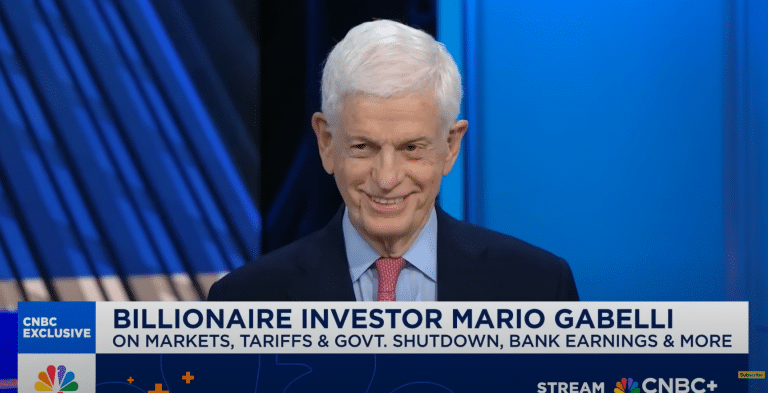We attended MWC25 Barcelona (formerly known as Mobile World Congress), held by The Groupe Speciale Mobile Association (GSMA), a global trade group representing interests of over 750 operators and nearly 400 companies in the broader mobile ecosystem, the week of March 3rd. The event’s theme “Converge. Connect. Create,” reflects how industries are coming together to define the next phase of digital transformation. Some of the key topics discussed at MWC included 5G, AI, connected robots, the need for telcos to transform their businesses business models and move beyond connectivity, as well as public policy around communication services and technology. MWC Barcelona is by far the largest wireless and telecom trade show/industry conference of the year. In 2025, MWC was attended by around 109,000 people from 205 countries and territories, with over 2,900 exhibitors, sponsors, and partners participating in the event. Below we summarize our reflections on the largest industry gathering.

5G: Middle Innings. 5G, a broad term for the fifth-generation of wireless network technology, not surprisingly, was one of the focal points of MWC25 Barcelona. 5G is entering its “middle innings.” 5G networks were first deployed in 2018, while initial commercial deployments of 6G (the next generation of mobile network technology) are planned for 2030. Today, there are over 350 5G mobile network deployments around the world. 5G, ultimately, is expected to provide super-fast data speeds in excess of 1 Gbps (with peak rates above 10 Gbps), ultra-low sub-1 millisecond latency, and ability to connect up to 100 times more devices than 4G networks. 5G has promised to be a foundation for completely new use cases, including autonomous vehicles, immersive gaming with virtual reality elements, remote surgery, and unprecedented factory automation. It is clear that some of the enterprise use cases are taking longer to develop than initially expected, in part, due to relatively slow adoption of 5G standalone (SA) networks (i.e. 5G network architecture that operates independently from existing 4G infrastructure, using a dedicated 5G core to manage all traffic and data). 5G SA networks are expected to be vital to fully realize the capabilities of 5G-Advanced, the next phase of 5G standards that is expected to bring new wireless technology innovations, while strengthening the 5G system foundation, including improving speed, maximizing coverage, and enhancing mobility and power efficiency. The rollout of 5G SA networks is starting to gain momentum. As of December 2024, 60 operators globally offered commercial 5G services on SA networks (with Asia Pacific leading the way, followed by Europe).GSMA expects that enterprise revenues enabled by standalone 5G would account for ~70% of wireless services industry growth through 2030 (representing ~$127 billion opportunity).

While the industry is still awaiting some of the more revolutionary use cases, one important 5G use case that has already become a reality for both consumers and businesses is fixed wireless access (FWA) (i.e. a case where the signal goes from the tower to a router inside the residential or business premises via wireless spectrum). According to Ericsson, global FWA connections are expected to grow from ~160 million at the end of 2024 (26% on 5G) to 350 million by the end of 2030 (with ~80% of those connections on 5G). With 11.6 million 5G FWA connections at the end of 2024, the United States is the world’s largest 5G FWA market, followed by India at 2.3 million connections. T-Mobile US and Verizon Wireless have been meaningfully scaling their FWA businesses over the past few years. Both operators primarily plan to use C-band and mm-wave spectrum for fixed wireless. The customers who are most susceptible to switching to fixed wireless are DSL and lower-speed cable-modem users, primarily in rural and suburban markets which are underserved by viable fiber competitors.

Per GSMA Intelligence, there were ~8.8 billion wireless SIM connections at the end of 2024 (corresponding to 5.8 billion unique mobile subscribers), with 5G representing ~25% of the total (or ~2.2 billion connections). By 2028, 5G adoption is expected to surpass 4G adoption, and by 2030, 5G is expected to reach ~5.7 million connections (or 57% of total SIM connections). GSMA estimates that in 2024, mobile technologies and services generated 5.8% of global GDP, a contribution that amounted to $6.5 trillion of economic value added. By 2030, mobile’s contribution to the global economy is expected to reach almost $11 trillion (or 8.4% of GDP), with the world benefiting from improvements in productivity and efficiency enabled by increased take-up of mobile services and digital technologies (including 5G, AI, and IoT).

From Telcos to Techcos.One of the key themes of several MWC keynotes was the need for mobile operators to accelerate growth by expanding the business beyond connectivity, evolving into more technology-focused and innovative companies, offering value-added services and solutions, while integrating and capitalizing on cloud computing, IoT, AI, and broad digital infrastructure. Emerging markets operators like e& from UAE, Bharti Airtel from India, and MTN from Africa highlighted additional platforms that are becoming a growing part of their operations, including fintech / digital banks, consumer super-apps and digital infrastructure. Developed markets operators also talked about incremental growth opportunities and moving beyond connectivity. For example, KDDI, a Japanese telecom operator, highlighted its investment in Lawson convenience stores and how it is incorporating AI into checkout, digital signage and use of robots at store locations. The company’s CEO, Makoto Takahashi, noted that KDDI is aiming to be a life platform focusing not only on telecom but on value-added services. Between 2015 and 2023, the firm increased value-added services as a percentage of total revenues from 21% to 44%.

Call for Lighter Regulation. Another key theme was the call by global telcos, but, in particular, European telcos, for more straightforward regulatory frameworks that would allow further consolidation. During one of the conference keynotes, CEOs of the largest telecom companies in Europe (Deutsche Telekom, Vodafone, Telefonica, and Orange) discussed the state of the industry on the continent and agreed that the sector is still too fragmented (with too many operators per country). They also noted that the heavy regulatory burden and lack of opportunities to achieve greater scale has put Europe behind the US and Asia in technological development (including the race to develop advanced AI capabilities). Additional in-market and in-region consolidation would allow operators to achieve greater scale and realize stronger returns while investing more in modernized networks. Deutsche Telekom’s CEO Tim Hoettges stated that there is no reason every country needs to have 3 or 4 operators, and, that the focus should be on building a European single market. He also noted that Deutsche Telkom has to deal with around 270 regulators across all markets where operates and that Europe needs its own version of DOGE to cut down the bureaucracy.

Exploring AI Opportunities. Artificial intelligence (AI) was one of the overarching themes of MWC25 Barcelona. While Generative AI remains in the headlines, telcos were also focused on exploring use of AI for optimization of processes and tools to accelerate transformation of the networks, productivity improvement across organizations (from call centers to retail operations), and development of more personalized services and solutions to better meet both enterprise and consumer customer expectations and create new revenue generation opportunities. On the trade show floor, handset and PC makers showcased their new devices, highlighting a variety of AI tools and services that users could leverage. Some of the AI-related announcements during MWC25 included (a) Deutsche Telekom’s partnership with Perplexity (AI-powered search engine) to create an AI Phone, to be powered by Perplexity’s AI Assistant (Perplexity became the first partner of DT’s “Magenta AI” suite of AI services); (b) collaboration agreement between Ericsson and Turkcell to advance Generative AI solutions across Turkcell’s networks and operations; (c) Xiaomi’s (Chinese handset manufacturer) launch of HyperAI suite of Generative AI features for its devices; etc. Yuanqing Yang, Chairman and CEO of Lenovo, noted that he expects over 80% of PCs sold globally in 2028 to have AI capabilities. Europe realizes that it needs to invest more in its AI ecosystem. During one of the keynote sessions, Arthur Mensch, CEO of MISTRAL AI (one of Europe’s leading large language models (LLMs)), noted that Europe needs to become more competitive in AI and that recent geopolitical events sent European companies a wake-up call, highlighting the need to reduce reliance on US technology and build local infrastructure. He believes that European telcos could become key enablers of that underlying AI infrastructure over time.

Connected Robots. Advanced robotics appears to be getting a boost from both 5G and AI. 5G connectivity, providing faster speeds and lower latency, is crucial for leading-edge robotics applications, enabling robots to interact with their environment and perform tasks more effectively and efficiently, while gaining access to more powerful data processing capabilities. AI, including Generative AI, has been improving and accelerating robots’ abilities to learn, adapt, and “make decisions,” with limited human intervention. At MWC25 Barcelona, connected robots were on display everywhere, from keynote sessions to trade show floor. CEO of Agility Robotics, Peggy Johnson, credited AI with boosting humanoid robot capabilities and reducing the time it takes to train them on specific tasks. Her company created a humanoid robot, Digit, that currently works in factory warehouses in Atlanta and performs “pick and place” tasks.

During a keynote session, Ms. Johnson demonstrated how she could quickly train Digit to perform a specific task (e.g. picking an item of a certain color and putting it in a designated bin) using voice commands. During a session on real-world use cases for 5G technology, Bill Chang, CEO of Digital InfraCo at Singtel, highlighted an interesting example from its home market. The company’s Paragon platform (all-in-one platform for 5G network, edge computing, cloud and services orchestration) enables Hyundai’s automotive factory in Singapore to produce ~100 electric vehicles per day using only robots. There are about 40 robotics and automotive engineers at the factory, but no traditional assembly line workers. All tasks are performed by connected robots (primarily by automated guided vehicles (AGVs) and robotic arms).

Screen Time. As always, there was meaningful presence from handset- and equipment-manufacturers at MWC, highlighting latest devices and technology. Samsung showcased its new Galaxy S25 smartphone lineup, including S25 Ultra (the largest device in the series) with 6.8-inch Edge Quad HD+ screen, up to 1 TB storage, and 4 rear-facing cameras (headlined by a 200-megapixel camera with optical image stabilization). Global technology brand HONOR highlighted its latest flagship device, the Magic7 Pro, alongside the ultra-premium Magic7 RSR Porsche Design. Magic7 Pro is a powerful device with 6.8-inch display, Snapdragon 8 Elite processor, up to 16 GB of RAM, and a 5,270 or 5,850 mAh battery. It is filled with AI-features supporting advanced on-device intelligence and ensuring optimized performance and professional-grade photography. HONOR also announced, at MWC, a new corporate strategy (“Alpha” initiative) to transform it from a smartphone maker to a global leading AI device ecosystem company. It plans to invest $10 billion over 5 years to integrate AI across its devices, bringing AI-powered features to smartphones, tablets, PCs and wearables. Some of the other high-profile handsets presented at the trade show included Xiaomi 15 Ultra and Huawei Mate XT.

In general, the phones are getting thinner (with Tecno Spark Slim claiming the crown of the slimmest phone in the industry with thickness of 5.75 mm or 0.22 inches). In the foldable category, phone screens now fold not just once, but twice – e.g. Huawei Mate XT unfolds into a 10.2-inch tablet-like screen. Samsung is also planning to launch a tri-fold phone later this year. Phone manufacturers continue to experiment with various elements of design, trying to find new forms or features attractive to consumers, including semi-transparent phones (e.g. Nothing Phone 3a and 3a Pro) and devices that change color when the temperature drops below a certain level (e.g. Readme 14 Pro).

ONE CORPORATE CENTER RYE, NY 10580 Gabelli Funds TEL (914) 921-5000









